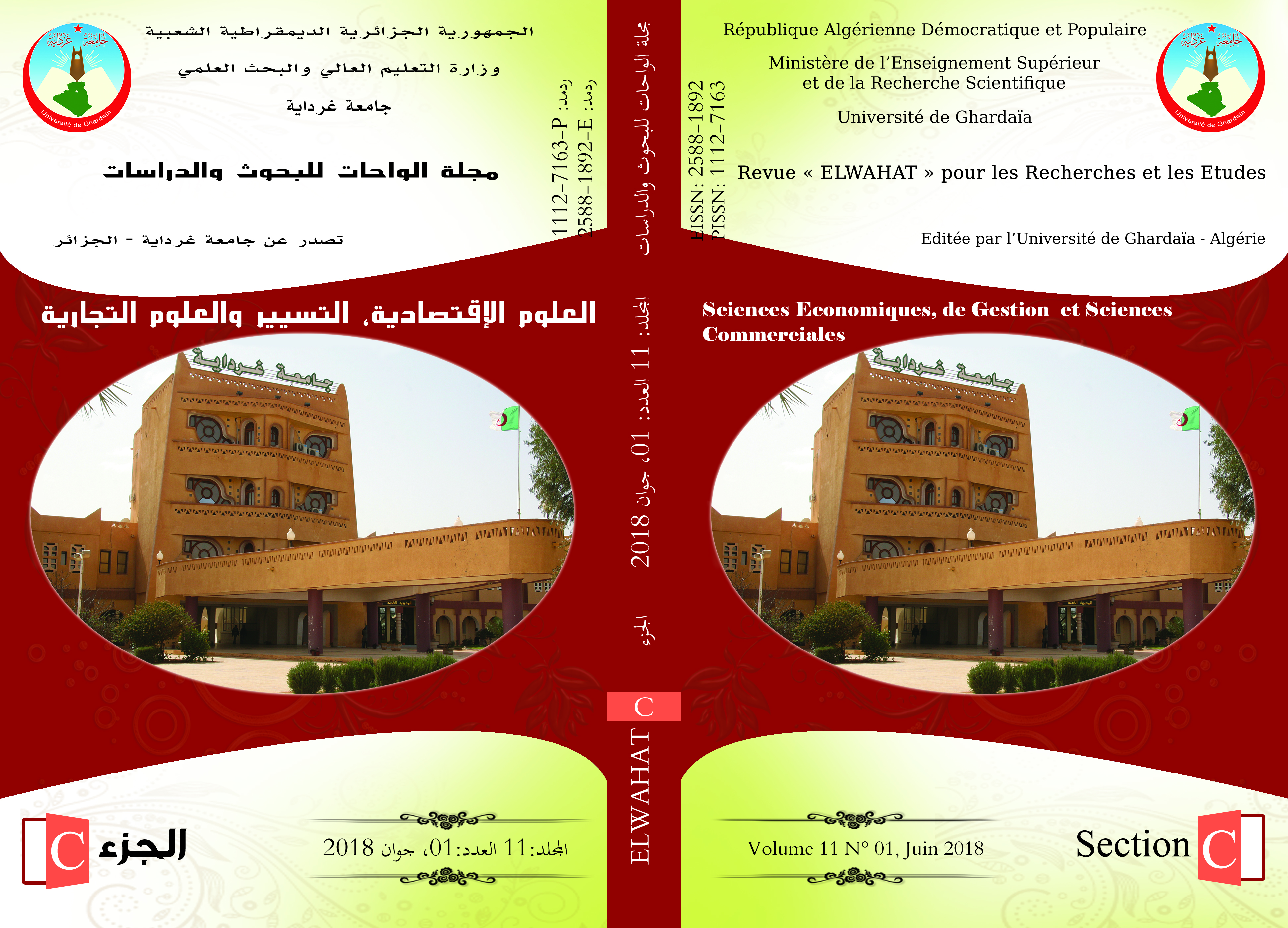الواقع الافتراضي في علم النفس العصبي
Abstract
الواقع الافتراضي هو تقنية معلوماتية تستنسخ بيئة حقيقية أو خيالية، تحاكي الحضور و البيئة المادية للمستخدم لتتيح تفاعل المستخدم. الواقع الافتراضي يخلق اصطناعيا تجربة حسية، والتي قد تشمل الرؤية، اللمس، السمع و الشم. هذه التقنية أدخلت في علم النفس العصبي في السنوات الأخيرة، للتقييم وإعادة التأهيل كأداة واعدة. التجارب التي أجريت باستخدام الواقع الافتراضي تبين أن هذه الأداة أكثر دقة من اختبارات الورقة و القلم ، لأن هذه الأداة تسمح بتقييم الوظائف المعرفية او السلوكات لذوي التلف الدماغي في بيئات مماثلة للبيئات التي يواجهونها في الحياة اليومية.الكلمات المفتاحية -
الواقع الافتراضي، علم النفس العصبي، الوظائف المعرفية، الاختبارات النفسية العصبية، السلوكات
References
1. Bertella L, Marchi S, Riva G. Virtual environment for topographical orientation (VETO) : clinical rationale and technical characteristics presence. Teleoperators and Virtual Environments 2001 ; 10 : 440-9.
2. Burgess N, Maguire EA, Spiers HJ, O’Keefe JA. Temporoparietal and prefrontal network for retrieving the spatial context of lifelike events. Neuroimage 2001 ; 14 : 39-453.
3. Evelyne Klinger, Rose-Marie Marié et Isabelle Viaud-Delmon, Applications de la réalité virtuelle aux troubles cognitifs et comportementaux,2006
4. Fuchs P, Coquillart S, Burkhardt JM. Le traité de la réalité virtuelle
5. Gaën Plancher Serge Nicolas Pascale Piolino, Apport de la réalité virtuelle en neuropsychologie de la mémoire : étude dans le vieillissement, Psychol neuropsychiatr Vieil 2008 ; 6 (1) : 7-22
6. Gourlay D., Lun K.C., Lee Y.N., Tay J. (2000). Virtual reality for relearning daily living skills. International Journal of Medical Informatics, 60, 255-261.
7. Grégory Lecouvey, Julie Gonneaud, Francis Eustache, Béatrice Desgranges, Les apports de la réalité virtuelle en neuropsychologie : l’exemple de la mémoire prospective, Revue de Neuropsychologie, Volume 4, Numéro 4, 2012
8. Grégory Lecouvey, Julie Gonneaud, Francis Eustache, Béatrice Desgranges, Les apports de la réalité virtuelle en neuropsychologie : l’exemple de la mémoire prospective, 2012
9. Johnson D.A., Rushton S., Shaw J. (1996). Virtual reality enriched environments, physical exercice and neuropsychological rehabilitation. In P.M. Sharkey (Ed.), Proceedings of the 1st European Conference on Disability, Virtual Reality and Associated Technology, (pp 247-251). Maidenhead, U.K., University of Reading.
10. L. Pugnetti, L. Mendozzi, A. Motta, A. Cattaneo, E. Barbieri, and A. Brancotti. Evaluation and retraining of adults’ cognitive impairment : which role for virtual reality technology ? Comput Biol Med, 25(2) :213–27 (1995).
11. Le Gall Didier, Allain Philippe, « Applications des techniques de réalité virtuelle à la neuropsychologie clinique », Champ psychosomatique 2/2001 (no 22) , p. 25-38
URL : www.cairn.info/revue-champ-psychosomatique-2001-2-page-25.htm.
DOI : 10.3917/cpsy.022.0025
12. Lezak MD. Neuropsychological assessment. 4th edition. New York : Oxford University Press, 2004.
13. Liu L., Miyazaki M., Watson B. (1999). Norms and validity of the drivr : a virtual reality driving assessment for persons with head injury. Cyberpsychology and Behavior, 2,53-68.
14. Meyerbröker K, Emmelkamp PMG. Virtual reality exposure therapy
15. Plancher G, Nicolas S, Piolino P. Apport de la réalité virtuelle en
Schultheis MT, Himelstein J, Rizzo AR. Virtual reality and neuropsychology : Upgrading the current tools. J Head Trauma Rehabil 2002 ; 17 : 379-94
16. Tulving E. Episodic memory : from mind to brain. Ann Rev Psychol 2002 ; 53 : 1-25.
2. Burgess N, Maguire EA, Spiers HJ, O’Keefe JA. Temporoparietal and prefrontal network for retrieving the spatial context of lifelike events. Neuroimage 2001 ; 14 : 39-453.
3. Evelyne Klinger, Rose-Marie Marié et Isabelle Viaud-Delmon, Applications de la réalité virtuelle aux troubles cognitifs et comportementaux,2006
4. Fuchs P, Coquillart S, Burkhardt JM. Le traité de la réalité virtuelle
5. Gaën Plancher Serge Nicolas Pascale Piolino, Apport de la réalité virtuelle en neuropsychologie de la mémoire : étude dans le vieillissement, Psychol neuropsychiatr Vieil 2008 ; 6 (1) : 7-22
6. Gourlay D., Lun K.C., Lee Y.N., Tay J. (2000). Virtual reality for relearning daily living skills. International Journal of Medical Informatics, 60, 255-261.
7. Grégory Lecouvey, Julie Gonneaud, Francis Eustache, Béatrice Desgranges, Les apports de la réalité virtuelle en neuropsychologie : l’exemple de la mémoire prospective, Revue de Neuropsychologie, Volume 4, Numéro 4, 2012
8. Grégory Lecouvey, Julie Gonneaud, Francis Eustache, Béatrice Desgranges, Les apports de la réalité virtuelle en neuropsychologie : l’exemple de la mémoire prospective, 2012
9. Johnson D.A., Rushton S., Shaw J. (1996). Virtual reality enriched environments, physical exercice and neuropsychological rehabilitation. In P.M. Sharkey (Ed.), Proceedings of the 1st European Conference on Disability, Virtual Reality and Associated Technology, (pp 247-251). Maidenhead, U.K., University of Reading.
10. L. Pugnetti, L. Mendozzi, A. Motta, A. Cattaneo, E. Barbieri, and A. Brancotti. Evaluation and retraining of adults’ cognitive impairment : which role for virtual reality technology ? Comput Biol Med, 25(2) :213–27 (1995).
11. Le Gall Didier, Allain Philippe, « Applications des techniques de réalité virtuelle à la neuropsychologie clinique », Champ psychosomatique 2/2001 (no 22) , p. 25-38
URL : www.cairn.info/revue-champ-psychosomatique-2001-2-page-25.htm.
DOI : 10.3917/cpsy.022.0025
12. Lezak MD. Neuropsychological assessment. 4th edition. New York : Oxford University Press, 2004.
13. Liu L., Miyazaki M., Watson B. (1999). Norms and validity of the drivr : a virtual reality driving assessment for persons with head injury. Cyberpsychology and Behavior, 2,53-68.
14. Meyerbröker K, Emmelkamp PMG. Virtual reality exposure therapy
15. Plancher G, Nicolas S, Piolino P. Apport de la réalité virtuelle en
Schultheis MT, Himelstein J, Rizzo AR. Virtual reality and neuropsychology : Upgrading the current tools. J Head Trauma Rehabil 2002 ; 17 : 379-94
16. Tulving E. Episodic memory : from mind to brain. Ann Rev Psychol 2002 ; 53 : 1-25.
Issue
Section
D- Humanities and Social Sciences






